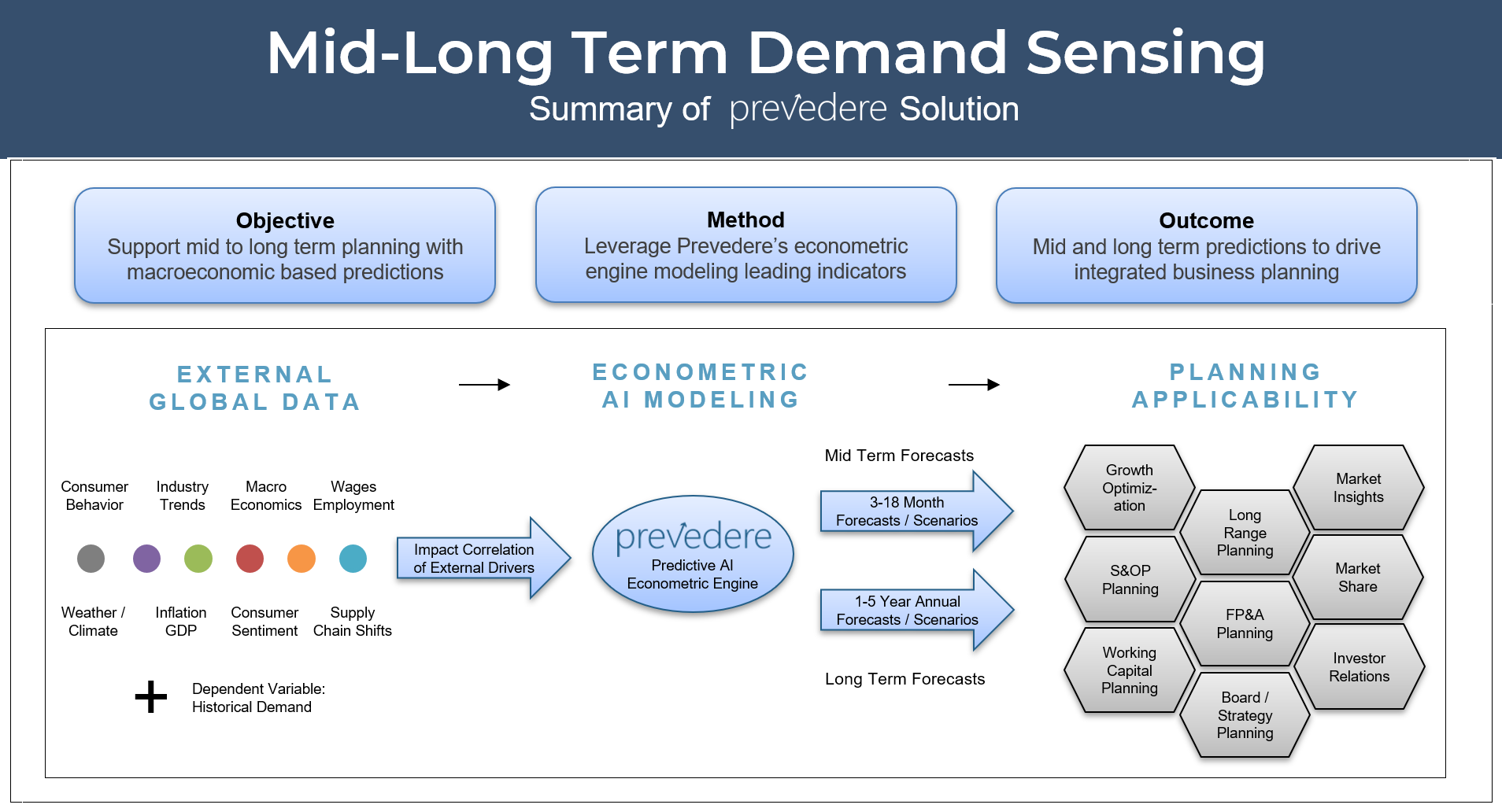Last Updated: June 21, 2022
What is Long-Term Demand Sensing?
According to Gartner, long-term demand sensing (LT DS) provides integrated business planning and supports long-term planning over the two- to five-plus-year time horizon. LT DS appears on Gartner’s ‘Hype Cycle’ for Supply Chain Planning, as an emerging technology. The application of this technology can kick-start a change in the nature of planning decision making through the use of more decision-grade data, machine learning and advanced analytics.
The intent of LT DS is to predict future trends in market demand for a company’s products or services considering the impact of macroeconomic factors (e.g. GDP, inflation), leading indicators and long-term causal influencers. LT DS utilizes machine learning and multiple external datasets to predict the market demand levels.
One of Prevedere’s sweet spots when it comes to demand planning precisely fits the description above. Prevedere’s platform combines a repository of external data signals, a predictive econometric AI engine, and a staff of economists who can personally interpret demand forecasts for each business layer.
Prevedere Also Supports Mid-Term Sensing
As companies extend the time horizon in their integrated business planning processes, they need to model leading long-term demand indicators. Prevedere’s predictive AI data and technology provides long term predictions and forecasts annually up to 5 years in advance. Prevedere also enables mid-term planning, enabling economic based predictions in the 3-18 month range.
An economic baseline demand forecast can be blended with an internal ‘traditional’ forecast into what’s known as a consensus forecast. Forecasts at varying levels of business granularity (e.g. by region, channel, brand, product, category) can be validated using economic-based predictions, created from the contributing external drivers and indicators of that line of business. The result is a market-driven forecast that is grounded in macroeconomics and potential future market volatility. The economic baseline forecast can represent a prediction for either the entire market segment, or the organizational performance. For example, a retailer can forecast the total demand for the Soap category in the USA for the next 3-5 years, or the projected US soap category sales for his/her organization.
Solution
Here is a summary of Prevedere’s solution for Mid-Long Term Demand Sensing:
Prevedere leverages its own repository of global data (Global Intelligence Cloud) from over 4 million data sets (industry trends, demographics, macroeconomics, consumer behavior, online activity, weather patterns and many more categories). Being model ready is key for organizations to develop models quickly and easily. Internal data science teams have tried this for themselves, but it really is a significant effort to figure out which external data sets to access and index. Prevedere’s correlation engine (Discover) identifies which external indicators contribute the most to affect demand for each of your markets (whether by geography, channel, brand or platform).
Prevedere Predict then builds models from hundreds of combinations of these indicators, and machine learning algorithms test, score and refine until the best possible model is created. Economic baseline forecasts and scenarios are then delivered to the business, and used in combination with internally generated forecasts (to create the consensus forecasts). Prevedere’s economists provide assessments of mid-long term market performance and cause & effect drivers.
Prevedere’s LT DS solution can be easily layered onto existing CPM and planning systems, as described in this short video.
Thanks for your time today.
 [Click for larger version]
[Click for larger version]